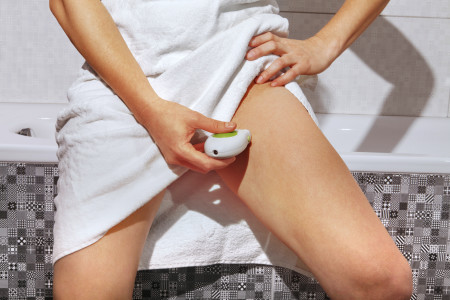7 ways to prevent injuries while trimming pubic hair
Have you ever injured yourself while trimming your pubic hair? You’re not alone. A study found that 1 in 4 people have injured themselves while grooming their privates. In this study, the most common injuries were deep cuts, burns, and rashes.
Prevent injuries while trimming pubic hair
You’re more likely to need medical care for a wound caused by trimming your pubic hair if you lie down while grooming your privates or have a partner trim you.

While most grooming injuries are minor, any injury to your genital area can make it easier to get a sexually transmitted infection (STIs). To avoid these injuries, dermatologists recommend the following tips.
Stand while trimming. Researchers have found that when an injury due to trimming requires medical care, the person was often lying down. Standing helps you to see what you’re doing, which could reduce injuries.
Trim your own pubic hair. Records show that more injuries occur when a partner does the trimming. It’s thought this happens because your partner cannot feel what’s going on.
Get your waxes at a salon or spa that never “double dips.” When spreading hot wax onto your skin, an aesthetician uses wooden sticks. The aesthetician should insert a new stick into the wax pot each time. If the aesthetician uses only one stick per client and keeps dipping that same stick into the wax pot, that’s “double dipping.”
When your aesthetician double dips, hair, skin cells, and bacteria from clients gets into the wax pot.
The heat from the hot wax creates an ideal breeding ground for bacteria. You could get an infection.Buy your own hair removal products and don’t share them. Shaving, waxing, and other hair-removal methods cause tiny tears in your skin. While you cannot see these tears, they’re big enough for bacteria, viruses, and other microorganisms to get inside your body.
If you share your products with someone who has an STI, you may get the disease. It’s reported that when two brothers shared a razor, which they both used to trim their pubic hair, the one with HIV passed the disease to his unaffected brother. Other STIs can also pass from one person to person this way.Use a clean razor, and shave carefully. Using a clean razor and focusing 100% on what you’re doing can help reduce injuries. The right technique is also important. These dermatologists’ shaving tips can help prevent injuries at How to shave.
Moisturize after shaving. A moisturizer can help reduce the dryness that often occurs after shaving. When applying moisturizer, use one that is fragrance-free and won’t cause acne. This reduces the likelihood that the moisturizer will irritate your skin.
Tip
“Fragrance-free” and “unscented" have different meanings. Here’s what each term means:
Fragrance-free: Means the product contains no fragrance.
Unscented: Means the product contains fragrance, but the fragrance has been masked so that you cannot smell it.
Ask a board-certified dermatologist about laser hair removal. While laser hair removal can eliminate trimming injuries, it’s important to consider the long-term effect. If you have laser hair removal, between 80% and 90% of your hair won’t grow back.
It’s also important to know that this option can be pricey — with treatment costing hundreds of dollars.
Shopping around for the best price isn’t recommended. Complications are more common when the person performing your procedure isn’t a board-certified physician who performs laser hair removal often. Performed improperly, laser hair removal can cause a disfiguring complication.
Now that you know how to reduce trimming injuries, you should have fewer nicks, burns, and rashes. If you continue to have a problem, a one-time consultation with a dermatologist can help.
Image
Getty Images
References
Butler SM, Smith NK, et al. “Pubic hair preferences, reasons for removal, and associated genital symptoms: comparisons between men and women.” J Sex Med. 2015 Jan;12(1):48-58.
Gaither TW, Awad MA, et al. “Prevalence and motivation: Pubic hair grooming among men in the United States.” Am J Mens Health. 2017; 11(3): 620-40.
Truesdale MD, Osterberg EC, et al. “Prevalence of pubic hair grooming-related injuries and identification of high-risk individuals in the United States.” JAMA Dermatol. 2017;153(11):1114-2.
 Atopic dermatitis: More FDA-approved treatments
Atopic dermatitis: More FDA-approved treatments
 Biosimilars: 14 FAQs
Biosimilars: 14 FAQs
 How to trim your nails
How to trim your nails
 Relieve uncontrollably itchy skin
Relieve uncontrollably itchy skin
 Fade dark spots
Fade dark spots
 Untreatable razor bumps or acne?
Untreatable razor bumps or acne?
 Tattoo removal
Tattoo removal
 Scar treatment
Scar treatment
 Free materials to help raise skin cancer awareness
Free materials to help raise skin cancer awareness
 Dermatologist-approved lesson plans, activities you can use
Dermatologist-approved lesson plans, activities you can use
 Find a Dermatologist
Find a Dermatologist
 What is a dermatologist?
What is a dermatologist?